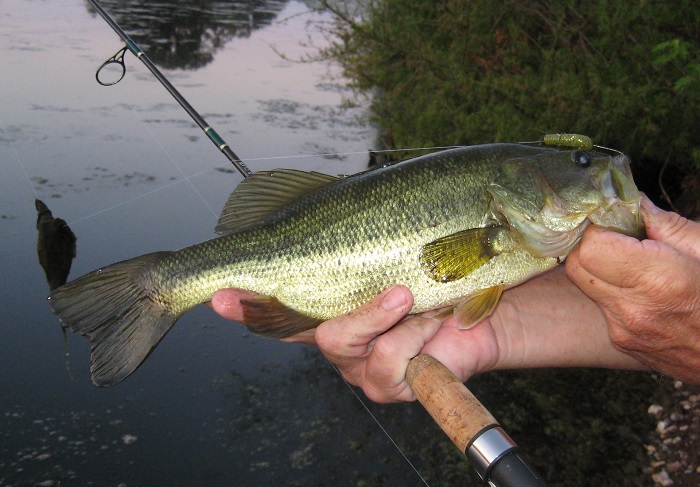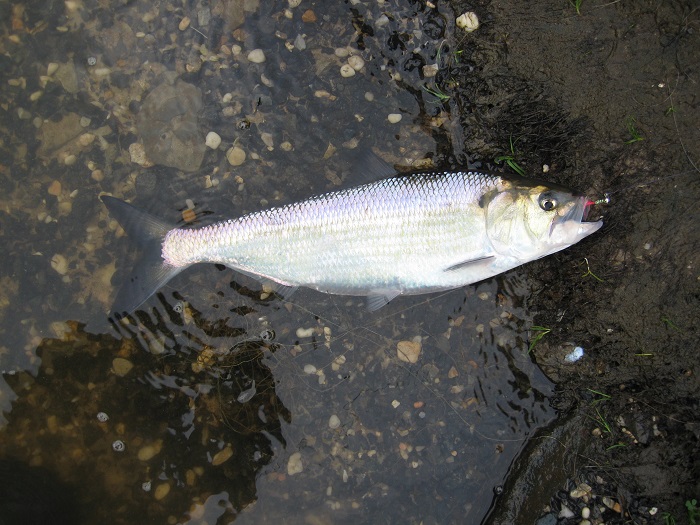
Maryland's Mill Ponds
Going back nearly 50 years I can always remember the anticipation of several “early season” trips to Maryland’s Eastern Shore to fish the many and varied mill ponds that dot the flat landscape of the Delmarva. Small, tannin-stained and often overlooked, these small bodies of water yielded an abundance of bass, crappies, bluegills, pickerel and more. In the streams below the mill dams there were often, if you timed it right, migrating runs of blueback herring, hickory and white shad, and white perch ready to spawn as well as remnants of yellow perch spawns. It was an abundance of many species, on any given trip, that would make any mill pond jaunt a special outing.

The month of April triggers this multi-species bonanza as pre-spawn largemouth bass, panfish and others move shallow and other fish crowd the spillways. One might benefit by traveling light, carrying a bass and panfish outfit, in order to cover the many bases of mill pond angling.
Tackle:
For the panfish gig, stick with 5.5- to 7-foot ultra-light spinning rods that can handle float and fly tactics in tight confines. Much of the shoreline areas of the mill ponds are overgrown and heavily vegetated, so if you are shore fishing then expect a degree of bushwhacking to deliver your baits and lures. We like to use a variety of jigs in the 1/32nd-ounce size and often tip them with a lively grass shrimp or piece of worm. Even if you are into shoreline related bluegills, crappies or big red ear sunfish, expect a by-catch of largemouth bass, pickerel or yellow perch.
[gallery columns="2" size="medium" link="none" ids="5251,5250"]
Bass anglers can use medium weight baitcasting or spinning gear with braided lines to 20-pound test or monofilament in the 12- to 17-pound range. Premier lures on the shore are a variety of 3/8-ounce spinnerbaits, soft plastics like 5-inch Senkos, and stick worms or plastic swim baits like the Keitech Swing Impact rigged weightless on a 3/0 offset worm hook. Later in the month, look for bass to be active with surface options using buzz baits and plastic frogs once the lily pads have emerged. Vegetation can come on quickly in the mill ponds once the waters heat up, so a minimum of 20-pound braid is needed to get quality, 3- to 4-pound bass out of the jungle.
Watercraft:
These are small waters, from 15-acres to 100-acres in size and most without improved boat ramps for access. Hence, kayak and canoe fishermen have the edge on launching a vessel. Trailering a full-sized bass boat is not needed for the mill ponds. Any 10- to 12-foot kayak or “car top” jon boat will be adequate for these waters. Small trolling motors are also ideal, but paddling not only helps you sneak up on shallow fish, it can also put you in range of great photo ops for wildlife and waterfowl.

The Spillway Gig:
As mentioned earlier, there are a number of saltwater species that make their way deep into the interior of the Eastern Shore via the many tributaries for their annual spawning rituals. Not all, but some, of these will host blueback herring, hickory shad and some even a pulse or two of white shad. At the base of some of the mill dams in the spillways can be some spectacular light tackle angling for these high-flying fish. Both 1/8- and 1/16th-ounce shad darts are the primary weapons for these gamesters. Use light spinning gear and 6- or 8-pound test monofilament for the best results in the deeper pools. Again, look for a by-catch of bass, perch, pickerel and other panfish species.
[gallery link="none" columns="2" size="medium" ids="5245,5246"]
As mentioned earlier, there are a number of saltwater species that make their way deep into the interior of the Eastern Shore via the many tributaries for their annual spawning rituals. Not all, but some, of these waters will host blueback herring, hickory shad and some even a pulse or two of white shad. At the base of some of the mill dams in the spillways can be some spectacular light tackle angling for these high-flying fish. Both 1/8th- and 1/16th-ounce shad darts are the primary weapons for these gamesters. Use light spinning gear and 6- or 8-pound test monofilament for the best results in the deeper pools. Again, look for a by-catch of bass, perch, pickerel and other panfish species.
Popular “take off” points would be any of the accommodations in Denton, Easton or Salisbury. Some of the more productive waters are the ponds in and around Salisbury (to include Johnsons Pond), Tuckahoe State Park, Wye Mills Lake, Smithville Lake, Idylwild Wildlife Management Area (multiple ponds that require some foot travel) and Chambers Lake. The town of Federalsburg also has some interesting angling in the Marshyhope Creek.
Keep in mind that there remains a moratorium on herring and shad (total catch and release fishery) and that largemouth bass will be in the “catch and release” season for the month of April (March 1 - June 15). Consult the 2018 Maryland Fishing Guide for additional regulations and information on tidal boundaries throughout the Eastern Shore.
This post was written by Jim Gronaw
Images courtesy of the author